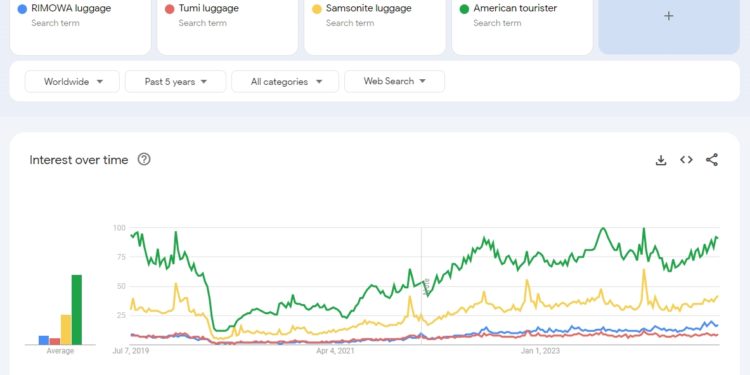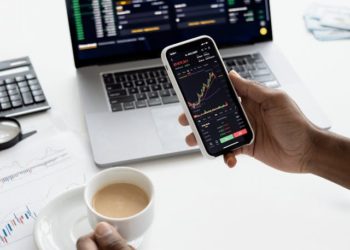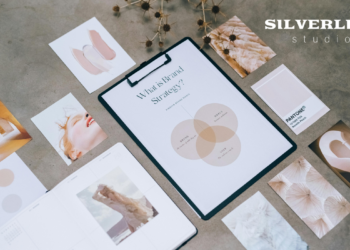Market research is a business template that merchant needs to fully understand. Benefiting from public data and Internet information, this global luggage industry analysis will walk you through an in-depth understanding of the industry’s prospects and the market share by brand positioning differences of the best brands, providing the necessary information for your business decision-making.
Global Market Size And Trends
The global luggage market was valued at approximately USD 40 billion in 2023 and is expected to grow to USD 60 billion by 2030, at a CAGR of 6.2% from 2024 to 2030. Rising demand for domestic and international travel coupled with rising disposable income has fueled the demand for durable and stylish luggage. Technological advancements in materials and design have enhanced the durability and functionality of the products, further driving market growth. In addition, consumer preference for convenience and customization has also boosted the luggage market.
Young consumers are no longer satisfied with traditional luggage and are looking for a variety of novel functions. Among them, the most impactful ones are smart luggage. Smart luggage usually contains built-in GPS tracking, a remote locking system, a USB charging socket, and an integrated scale.
Another new trend is multifunctional luggage: it is easy to carry them from one place to another and they do not take up much space. They can be transformed into multifunctional luggage, such as foldable trolleys, trolley bags, handbags, and luggage bags.
Market Share By Top Brands
Away
According to Adweek’s report, Away is projected to have $300 to $350 million in annual revenue before the pandemic. Meanwhile, Similarweb and Google Trends show that Away’s market exposure and search popularity have dropped by 63% in the past four years. It can be inferred that Away’s market share has declined compared to before the epidemic.
RIMOWA
The popularity of RIMOWA luggage rebounded quickly from the beginning of 2020 when the epidemic broke out. As of July 2024, its global search popularity and population have increased 10 times. However, the brand only accounted for 1.8% of the global suitcase market in 2015. Between 2015 and 2020, the brand’s sales and popularity growth were almost stagnant, RIMOWA is the high-end luggage brand with the largest growth in brand influence in the past decade.
Tumi (belongs to Samsonite)
Samsonite’s annual report shows revenue of US$3 billion in 2023. Its performance has recovered year by year in the past three years, with an annual growth rate of 23%. Tumi was acquired by Samsonite in 2016 and is one of the most well-known luggage brands under Samsonite, accounting for 10% of the company’s However, Google Trends shows that since Tumi’s performance plummeted in 2020, it has only recovered to pre-epidemic revenue levels in the past four years. In the past 15 years, Tumi’s revenue has not grown significantly.
How To Calculate The Market Share Of A Brand
Select 2 to 3 leading brands, use their public annual reports as reference (listed companies), combine the search growth curve of Google Trends to make year-on-year comparisons, multiply the annual search popularity growth rate by the previous year’s turnover, and compare the annual change curves of each brand across brands. This will allow you to intuitively see the changes in the market operating income of each brand. Finally, divide the estimated revenue of each brand in the current year by the total market value of global luggage in the most recent year.
Types Of Luggage From Leading Brands
Whether it is the top 3 brands mentioned above, or new brands such as Travelpro and MvstSelect, more than 80% of their luggage is made of aluminum, and the rest are made of PC or PP. In terms of price range, the luggage of the leading brands is all priced at more than US$300. Compared with other materials, aluminum looks more high-end and has a better user experience, so it has a larger premium space. This is why top brands are keen on aluminum luggage.
The Bottom Line
This bottom line refers to the factors that merchants need to focus on in market competition, such as quality and pricing. Given that most brands provide lifetime warranty services and also need to consider profit margins, the general practice is to reserve enough advertising budget and after-sales budget in pricing.
Taking Google Ads as an example, luggage from a well-known brand needs to be clicked by 50 to 100 users to generate a transaction. The advertising cost for each click is US$0.8 to US$1.5, which means that with an average of $120, advertising expenditure can sell travel luggage. According to Aluvox as a luggage OEM factory of global brands worldwide for more than 20 years, the factory price of 20-inch aluminum luggage is US$60 to US$80, depending on its functions, additionally, the cost of a lifetime warranty, a competitive luggage price bottom line is no less than $269 to make it within your budget.
Two Modes Of Market Intervention
Light Asset Model
The asset-light model includes two types of companies: OEM and drop shipping. The former forms provide OEM services to brands, while the other relies on the spot supply chain and promotes direct sales through its channels. The bulk of the cost of OEM comes mainly from the machinery and equipment used for processing and the rent of the factory, while the bulk of the cost of drop shipping comes from the advertising fees, labor costs, and time costs generated during the promotion. In a recent article, I talked about how to start your dropshipping business.
Heavy asset model
The heavy asset model is generally based on the private label brand, finding suitable OEM factories to produce suitcases, and carrying out inventory and sales for a long time. The bulk of the expenses come from advertising fees, personnel expenses, and production site rentals generated during the inventory and promotion of goods. Even if sales are online, comprehensive expenses such as platform service fees will be incurred regularly.
Last but not least, There is no single business model that can guarantee your success in the luggage market; all business decisions need to be made based on your circumstances.











































































